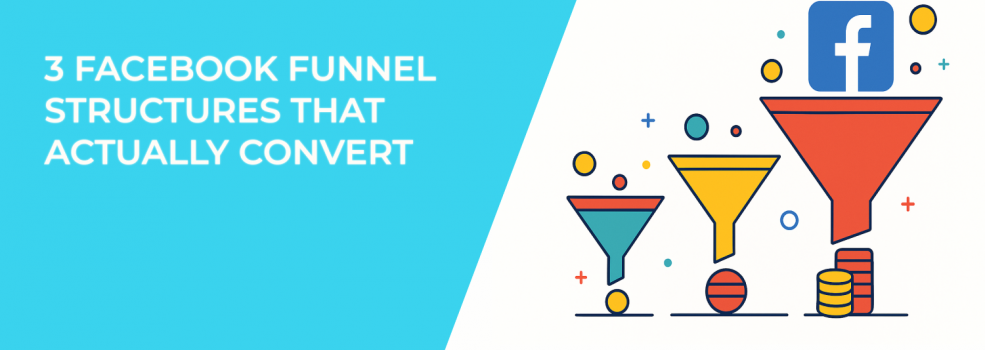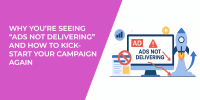Facebook ads can help your business grow. But with the platform always changing, finding the right funnel structure that works can be tricky. Whether you're new to Facebook ads or have been doing this for a while, understanding the right funnel is key to long-term success.
A Facebook funnel takes potential customers from awareness to conversion. Not all funnels are the same, though. Some work better for certain goals or businesses. In this article, we’ll look at three Facebook funnel structures that actually deliver results. With tips and practical ideas, you’ll be ready to build a funnel that converts.
1. The Classic Lead Generation Funnel
Lead generation is a great way to build an audience that’s ready to buy. By offering something valuable in exchange for contact info, you can nurture leads and turn them into customers. But don’t think this is just a one-step process. Every stage needs careful attention.
How it works:
-
Awareness Stage: Start by offering a high-value lead magnet—like an eBook, checklist, webinar, or free trial. The ad should grab attention and encourage people to click and share their contact details. Use clear images and a strong call-to-action (CTA).
-
Interest Stage: After someone downloads your lead magnet or clicks on your ad, keep them engaged. You can do this through an email sequence, retargeting ads, or both. Continue offering value—helpful emails, resources, and case studies that build trust.
-
Decision Stage: By now, the lead knows your business. Now it’s time to push for the sale. Offer a special discount, limited-time offer, or bonus to encourage action. This is the moment to show them how your product or service solves their problem.
Tips for optimization:
-
Keep lead forms simple. The fewer fields to fill out, the better.
-
Use email automation to stay in front of leads and remind them of the value your product offers.
-
Make sure your lead magnet matches your audience’s needs. If you offer something specific, make sure it delivers.
Why it works: This funnel works because it’s focused on building relationships. You’re not just asking for a sale right away. You show that you understand the problem and can help solve it, which builds trust over time.
If you want more strategies on lead generation, check out our article on Best Facebook Ad Campaign Structures for Lead Generation.
2. The Retargeting Funnel
Retargeting is one of the most effective strategies. It focuses on people who have already shown interest in your business.
How it works:
-
Awareness Stage: Start with a general ad introducing your product or service. The goal is to get your target audience familiar with your brand, whether they’ve seen you before or not.
-
Interest Stage: After someone engages with your ad, retarget them with more detailed content. Show them product features, testimonials, or a case study to deepen their interest.
-
Decision Stage: The final ad should encourage them to take action. Offer a time-sensitive discount or bonus that pushes them to convert now.
Tips for optimization:
-
Segment your audience based on their previous actions.
-
Use dynamic ads to show products they’ve already viewed.
-
Set frequency caps to avoid overexposing your audience to the same ad.
Why it works: Retargeting works because it targets people who already know your brand. They’ve shown interest, which makes them more likely to convert. Retargeting just nudges them along to the final step.
Learn more about retargeting with our guide on How to Set Up Facebook Retargeting.
3. The Content-Driven Funnel
This funnel focuses on providing valuable content at each stage of the journey. It’s ideal for businesses with a strong content marketing strategy.
How it works:
-
Awareness Stage: Start with a piece of valuable content like a blog post, video, or guide. This should address a problem your target audience faces and offer them useful insights.
-
Interest Stage: After they engage, keep providing more helpful content. This can include follow-up emails, webinars, or additional articles that dive deeper into the topic.
-
Decision Stage: After nurturing them with value, present your offer. By now, they’ll trust your expertise and be more likely to make a purchase.
Tips for optimization:
-
Don’t push for a sale too soon. Build trust with valuable content first.
-
Use video to keep your audience engaged. It’s easy to consume and more engaging.
-
Create content that answers your audience’s questions or solves their problems.
Why it works: The content-driven funnel works because it’s focused on long-term relationship-building. Instead of asking for a sale right away, you offer value, which leads to higher conversions down the line.
For more on content funnels, read our article on Why Your Facebook Campaign Needs a Middle of Funnel Strategy.
Final Thoughts
Choosing the right funnel structure depends on your goals. Whether you want leads, retargeting, or content engagement, each funnel has its place.
Consistency is key. Make sure your messaging is clear, and engage your audience at every stage. Don’t be afraid to test and adjust. Facebook ads aren’t a one-time setup—they need constant optimization.
Are you ready to build your funnel? Test these structures and see what works best for your business.

